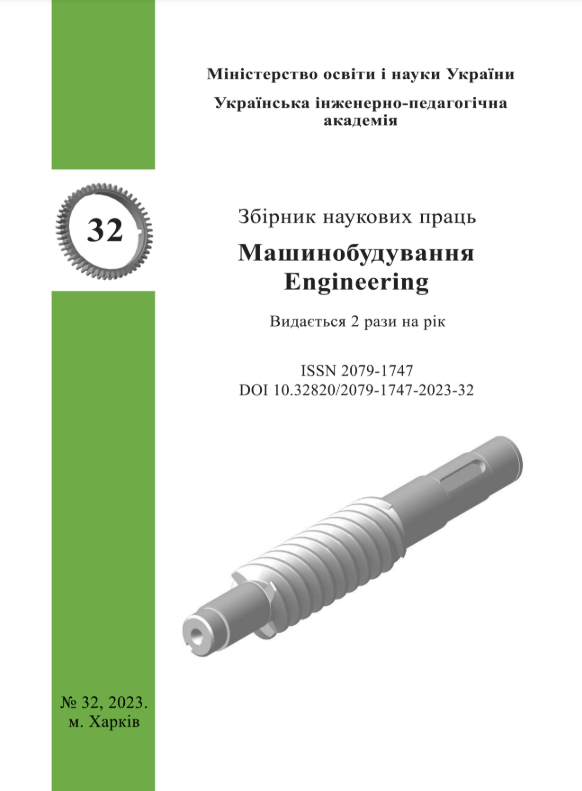Study of characteristics of a solar cell when damaging the surface of a photovoltaic module
Abstract
DOI: https://doi.org/10.32820/2079-1747-2023-32-72-79
The article examines the factors and causes leading to damage to the surface of a photovoltaic
module and their impact on the characteristics of solar elements. Various types of surface damage to
photovoltaic modules and the reasons for their occurrence are analyzed. Among the most common
damages to photovoltaic modules are: traces of burning on the front and back panels, color change of sealant, delamination of multicrystalline modules, electrochemical corrosion of thin-film modules,
burning of ethylene vinyl acetate film in different parts of the cell, delamination of the backsheet, and
breakage of thin-film glass of the photovoltaic module. It is noted that during prolonged operation of
photovoltaic modules, there is a significant decrease in their productivity due to deterioration of key
parameters: the efficiency coefficient and output power. It has been found that surface damage to
photovoltaic modules occurs due to extreme weather conditions such as hail, wind, and temperature;
manufacturing defects; improper operation; wear and degradation of solar elements over time. An
analysis of types of photovoltaic module degradation and its consequences is conducted. It is shown
that degradation occurs due to chemical reactions between active metals in the photovoltaic module,
extreme weather conditions such as sharp temperature fluctuations, humidity, constant freezing and
thawing. It has been revealed that degradation leads to a decrease in the current conductivity of the
photovoltaic module, the appearance of parasitic resistance of the photomodule, the occurrence of
cracks, micropores, and surface irregularities on the photovoltaic module. Measures to prevent the
appearance of defects at all stages of production, installation, and delivery of photovoltaic modules
are proposed. These measures include: selection of photovoltaic modules for the construction of a
solar station from reputable manufacturers; carrying out repair work on photovoltaic modules in
specialized companies; organization of regular technical inspection of photovoltaic modules;
monitoring of photovoltaic module parameters during operation; adherence to the main rules for
operating photovoltaic modules.
Downloads
References
Glushko, O & Stepenko, S 2021, ‘Parametri, harakteristiki i faktori, scho vplivayut na efektivnist ta nadiynist roboti fotoelektrichnih peretvoryuvachiv u skladi elektroenergetichnih sistem’ [Parameters, characteristics, and factors influencing the efficiency and reliability of photovoltaic converters within electric power systems], Tehnichni nauki ta tehnologiyi, no 1 (23), pp. 249-264.
Budanov, P, Kyrysov, I, Brovko, K, Rudenko, D, Vasiuchenko, P & Nosyk, A 2021, ‘Development of a Solar Element Model Using the Method of Fractal Geometry Theory’ Eastern-European Journal of Enterprise Technologies, Vol. 3/8(111), pp. 75-89.
Kirisov, I & Budanov, P 2022, ‘Metodi doslidzhen poglinayuchoyi poverhni sonyachnih elementiv’ [Methods for investigating the absorbing surface of solar cells], Mashinobuduvannya, iss. 29, pp. 104-117.
OlIynik, YuS 2018, ‘Vikoristannya sonyachnih batarey u suchasnih umovah’ [Using solar panels in modern conditions], VchenI zapiski Tavriyskogo natsionalnogo universitetu imeni V.I.Vernadskogo. SerIya: TehnIchnI nauki, no 29, Pp. 220-224
Kirisov, IG, Budanov, PF, Hom’yak, EO & Brovko, KY 2008, ‘Pіdhodi ta vimogi do modelyuvannya strukturi napivprovidnikovogo sharu sonyachnogo elementa’ [Approaches and requirements for modeling the structure of a semiconductor layer in a solar cell], VIsnik VPI, iss. 1, Pp. 35–38.
Jоrgensen, M, Norrman, K & Krebs, FC 2008, ‘Stability/degradation of polymer solar cells’, Solar energy materials and solar cells, vol. 92, no 7, pp. 686-714.
Dhimish, M, Holmes, V, Mehrdadi, B & Dales, M 2017, ‘The impact of cracks on photovoltaic power performance’, Journal of Science: Advanced Materials and Devices 2.2, pp. 199-209.
Dhimish, M, Holmes, V, Dales, M & Mehrdadi, B 2017, ‘Effect of micro cracks on photovoltaic output power: case study based on real time long term data measurements’, Micro & Nano Letters, no 12(10), pp. 803-807.
Li, Y, Huang, W, Huang, H, Hewitt, C, Chen, Y, Fang, G & Carroll, DL 2013, ‘Evaluation of methods to extract parameters from current–voltage characteristics of solar cells’, Sol. Energy, Vol. 90, P. 51-57.
Laudani, A. Riganti Fulginei, F & Salvini, A 2014, ‘High performing extraction procedure for the one-diode model of a photovoltaic panel from experimental I–V curves by using reduced forms’, Sol. Energy, Vol. 103, Pp. 316-326.
Lineykin, S, Averbukh, M & Kuperman, A 2014, ‘An improved approach to extract the single-diode equivalent circuit parameters of a photovoltaic cell/panel’, Renew. Sustain. Energy Rev, Vol. 30, P. 282-289.
Dongue, SB, Njomo, D, Tamba, JG & Ebengai, L 2012, ‘Modeling of Electrical Response of Illuminated Crystalline Photovoltaic Modules Using Four- and Five-Parameter Models’, International Journal of Emerging Technology and Advanced Engineering, Vol. 2, P. 612-619.
Cubas, J, Pindado, S & Victoria, M 2014 ‘On the analytical approach for modeling photovoltaic systems behavior’, Power Sources, Vol. 247, P. 467-474.
Peng, L, Sun, Y, Meng, Z, Wang, Y & Xu, Y 2013, ‘A new method for determining the characteristics of solar cells’, Power Sources, Vol. 227, P. 131-136.
Said, S, Massoud, A, Benammar, M & Ahmed, S 2012, ‘A matlab/simulink based photovoltaic array model employing simpowersystems toolbox’ Journal of Energy and Power Engineering, Vol. 6, P. 1965-1975.
Cubas, J, Pindado, S & Manuel, C 2014, ‘Explicit Expressions for Solar Panel Equivalent Circuit Parameters Based on Analytical Formulation and the Lambert W-Function’, Energies, Vol. 7, P. 4098-4115.

